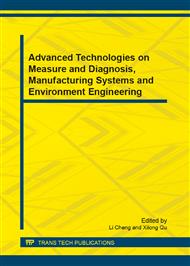p.416
p.421
p.429
p.434
p.438
p.443
p.448
p.452
p.457
Study on Natural Non-Circulating Current Work Mode of AC-AC Converter Based on Two-Variable Control Method
Abstract:
Three work modes of general AC-AC frequency transducer are compared. And the disadvantages of two work modes are pointed. In order to overcome these disadvantages, on the basis of two-variable control theory, the natural non circulating current work mode is brought forward and analyzed. Two controlled variables trigger angle α and pulse width b, need control in this mode. How to assign the moment of trigger and how to assign trigger pulse width are the key problems. And then these problems are discussed. The principle of this mode is analyzed in a third of all frequency value as an example. The essence and excellence of natural non circulating current work mode and the feasibility are pointed out.
Info:
Periodical:
Pages:
438-442
Citation:
Online since:
June 2013
Authors:
Price:
Сopyright:
© 2013 Trans Tech Publications Ltd. All Rights Reserved
Share:
Citation:


